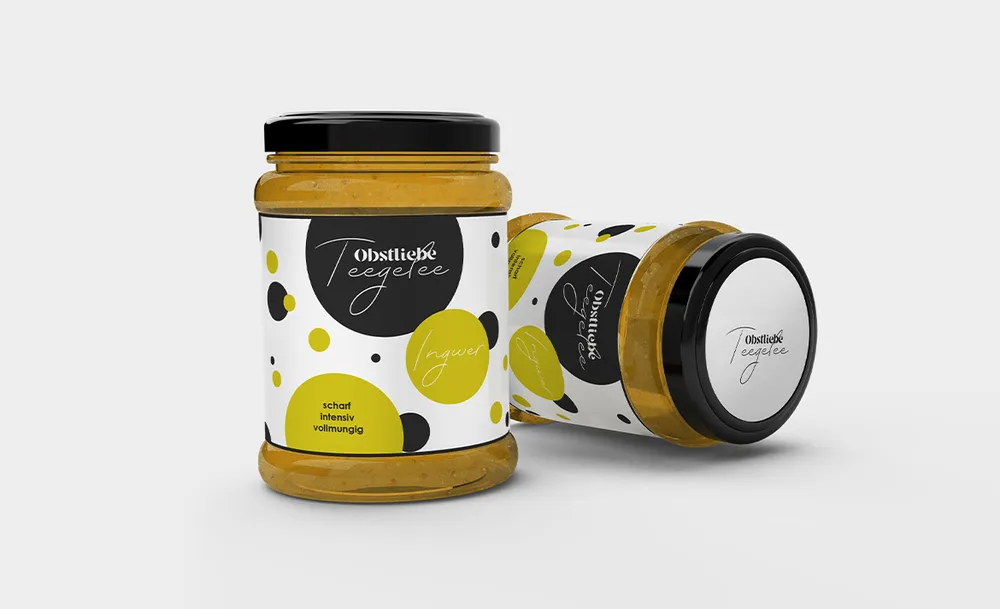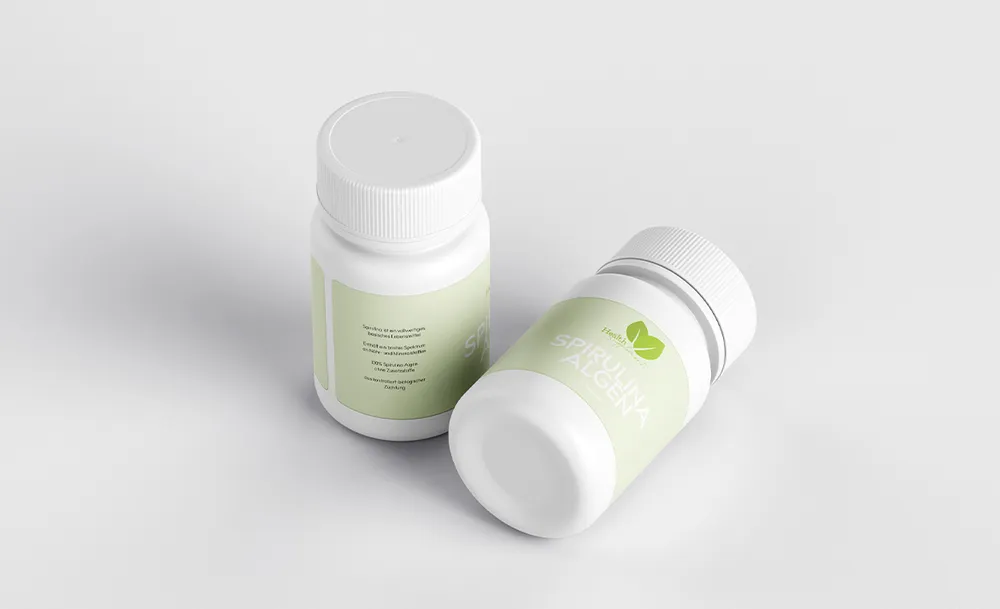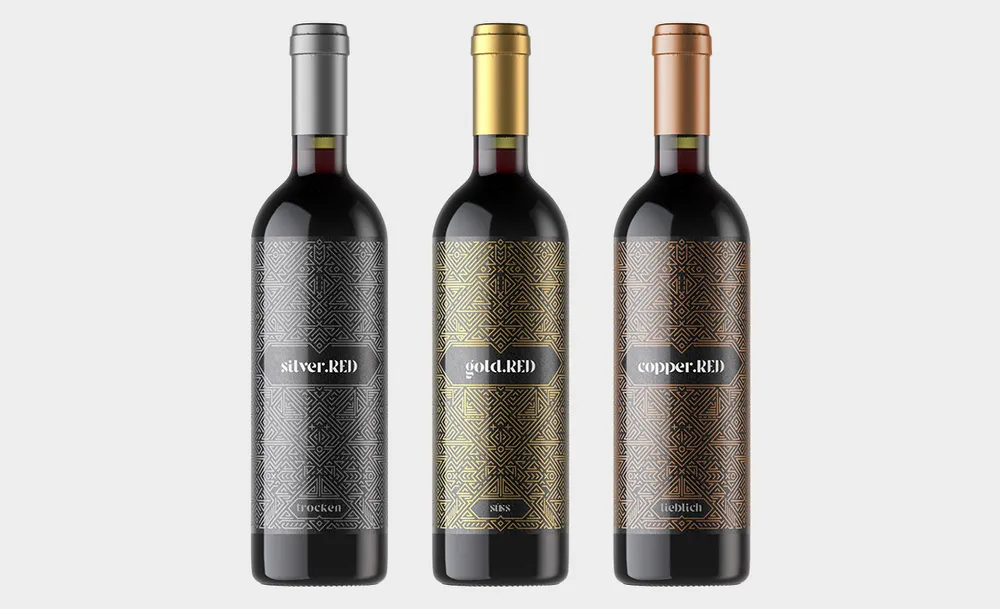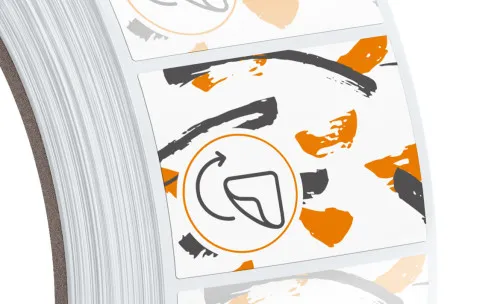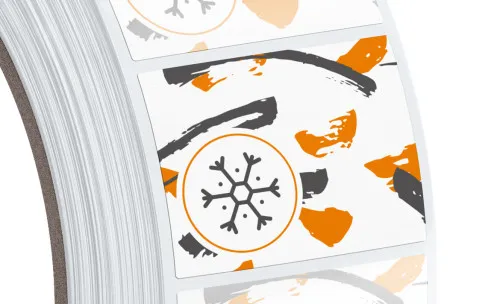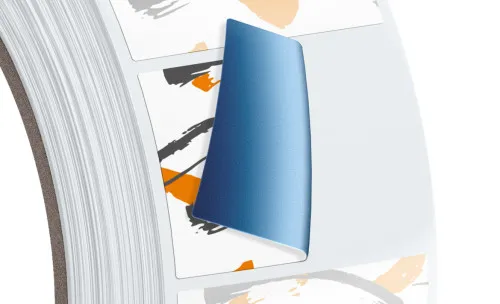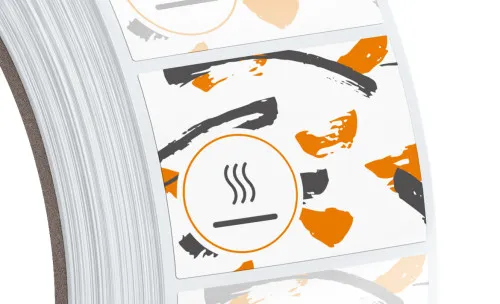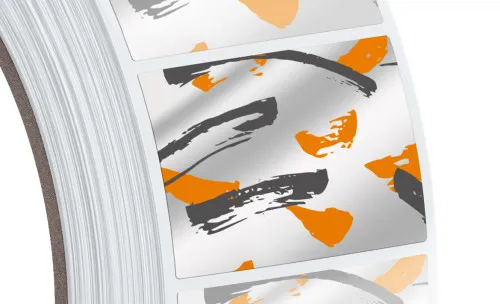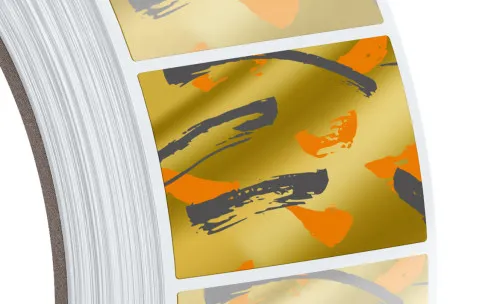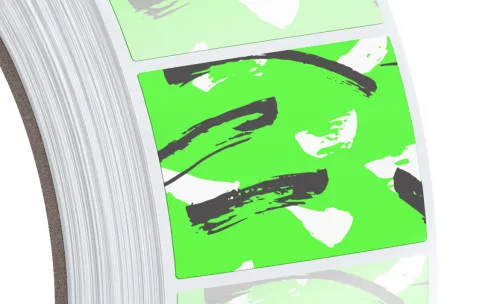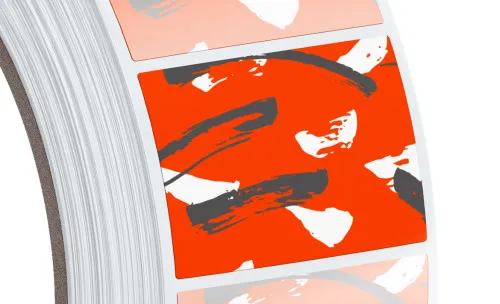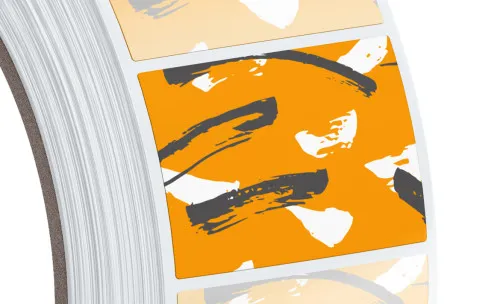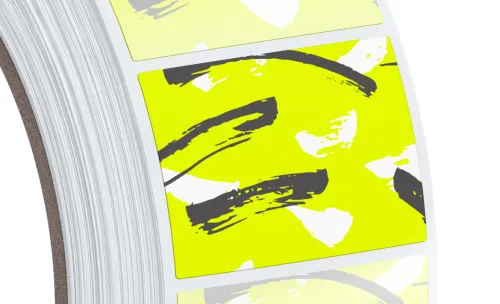Paper labels
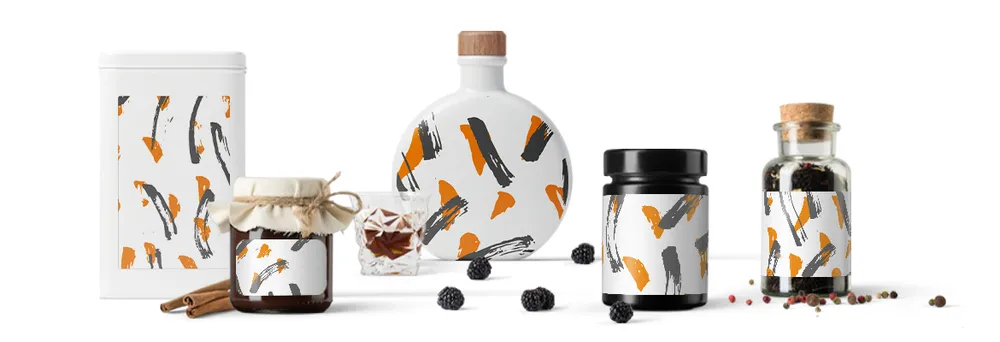
You can use your specifications to calculate paper labels pricing online at Labelprint24 in any format you wish, in many materials, and whatever design you come up with. We carry a wide range of printed and unprinted paper labels on rolls or as multi-layered labels (booklet labels, multi-layer labels). The unprinted surfaces on all of our paper labels can in principle be printed using thermal transfer methods.
How do I calculate the price of my paper labels?
- Select the paper and the type of adhesive below on this page.
- Your choices will then be automatically added to the corresponding price calculator.
For questions about the price calculator, simply contact our customer support. We will be glad to assist.
Note:
- Upon request, we are also glad to do test runs on your materials or other special materials.
- Here you will find perfectly tested thermal transfer ribbons and printers.
Paper labels: an overview of the materials
Paper labels are primarily suitable for applications in dry, indoor environments. For outdoor applications, paper labels should be provided with a protective laminate. Protective laminate for paper labels makes your labels smudge-proofs, scratch-resistant, increases resistance to environmental influences (dirt, dust, water, sun, fats, oils), and is an option you can select in our price calculator. Paper labels should not be applied to deformable packaging, since the fibres of the paper will tear when pressure is applied.
Label paper, white
Here you will find different white label papers and different types of adhesive for custom roll labels. In addition to common paper materials, we also offer opaque labels and food labels that can be used in frozen-foods departments. Some materials are also suitable for calculating multi-layer paper labels.
Material: Label paper, white + adhesive
Thermal paper - direct print
Thermal labels are an everyday party of food retail and warehousing.
We offer the right thermal paper for use in both shorter-term and long-term service life for the industrial labelling of meat, vegetables and fruits. The unprinted part of the surface thermal labels can be easily individually printed with standard direct thermal printers.
Thermoetiketten sind im Lebensmitteleinzelhandel und in der Lagerwarenkennzeichnung nicht mehr weg zu denken.
Material: Thermal paper + adhesive
Metallized paper silver/gold
Metallized paper material in shades of gold and silver are commonly used for sales promotions and to mark award-winning products. The special effect of these metallic papers is also commonly seen on electronics products. The effect is almost like a foil embossing, but at a much lower price point.
Material: Metallized paper silver/gold + Adhesive
Fluorescent paper - green / red / orange / yellow
Whether special prices or for conventional pricing, labels with our fluorescent paper are legible and come in the typical neon colours for use on cardboard and other packaging.
- Available in the colours GREEN/ RED/ ORANGE/ YELLOW
White label paper for laser/inkjet printers
- This one-side coated kraft paper has been developed especially for the printing of label sheets in copiers and laser printers. The adhesive is especially suitable for boxes, PE and PP materials, and glass.
White label paper - for water-based inkjet printing
Characteristics of different papers
Not all paper is the same. Paper is divided into many different types, which have different properties. Different types of paper are required for different application. We describe those characteristics below.Papier ist nicht gleich Papier. Papier wird in viele Sorten unterschieden, welche unterschiedliche Eigenschaften besitzen. Für diverse Einsatzzwecke benötigt man entsprechendePapiere mit verschiedenen Eigenschaften. Welche Eigenschaften das sind, beschreiben wir im Folgenden.
One characteristic is the paper surface, which can be smooth or open, in other words rough. Smooth papers are excellent for printing with brilliant colours. Rough papers, in contrast, are characterised by their special haptic effect. Another characteristic is the paper colour, or brightness. Paper in different colours has different effects when printed on. Bright white paper creates a high contrast to the printed image. Creamy white paper is more pleasing to the eye. However, in addition to these two paper colours, there are many others, such as bluish or darker papers with a natural colouring. There are various standards and measurement methods to precisely determine the whiteness of a paper, for example DIN standards, D65 or ISO methods. Another surface property of paper is gloss. This is about how much light the paper surface reflects. Matt surfaces have a low reflection, glossy surfaces have a high reflection. Another light-related characteristic of paper is opacity. This refers to the opacity of the paper. If you do not want the printed image to be visible on the reverse side, you should ensure a high opacity.
Other characteristics of the paper are the basis weight, also known as grammage, and the volume. The grammage of the paper is measured in grams per square metre. A high grammage usually gives a high-quality appearance. If you want a lighter paper with a high-quality feel, you can choose a paper with high volume but a lower grammage.
The environmental moisture as well as the quality and arrangement of the fibres determine the strength of paper. The strength defines the paper’s tensile, burst, bending, surface and tear strength.
Other characteristics of paper include its runability and printability. These properties are particularly important for the printer and must be considered before printing the paper labels.
Paper composition
All types of paper, including label paper, can be made from different materials. However, paper is usually made from cellulose. Cellulose is made from various types of wood. Nevertheless, paper that consists of at least 95 % cellulose is called wood-free. Many types of paper also contain groundwood pulp. From a concentration of 5 % groundwood pulp, a paper is considered to contain wood. Textile fibres, also known as rag, are another raw material that can be used to make paper. Papers made from rag fibres are very resistant to weathering and ageing and have a very high tear resistance.
Another popular material in paper production are recycled fibres. Recycled fibres are commonly mixed with virgin fibres, which give the paper stability and make it tear-resistant. In addition, paper made from recycled fibres is often bleached to achieve a higher degree of whiteness.
In addition to the main raw material such as cellulose, groundwood pulp or recycled fibres, up to 30 % fillers are added to the fibre mixture. These include resins, glues or minerals. These create a smooth surface and opacity (impermeability to light).
Overview of paper types
There are several types of paper, which differ in the way they are manufactured. The different types of paper are used as printing or labelling paper, for example. The individual types of paper differ in the material used, wood-free or wood-containing, which is either coated or uncoated.
One type of paper is wood-free coated paper. It either has a matt, semi-gloss, gloss or high-gloss surface. All details can be reproduced very accurately, sharply and brilliant on its surface. This enables to make fine printing screens.
Another type of paper that has gained popularity in recent years is wood-free uncoated paper, also known as natural paper. The open and rough surface gives the printed products a pleasant feel with a natural touch. The rough surface ensures that the paper absorbs the printing ink very well and is highly absorbent. However, overly fine printing screens are not possible.
Wood-containing coated papers are divided into LWC papers and MWC papers. LWC stands for light weight coated. These are papers with a low grammage, which are single coated on both sides. MWC stands for medium weight coated. This is double-coated paper with a medium grammage. Wood containing coated paper with a very high grammage and high stiffness if MFC (machine finished coated) paper.
Wood-containing uncoated papers are machine-finished coated papers without a coating, which are available in various grammages.
Paper production
Wood-containing uncoated papers are machine-finished coated papers without a coating, which are available in various grammages.
The first step is the stock preparation. This involved adding water to the raw materials used, including the fillers: the mixture now consists of 99 % water. Some of the water is then removed from the fibre mixture in the stock run. In the following step, the sieve section, a large part of the water drains off and a fibre web is formed. In the press section, the water is then pressed out under pressure. In this step, the water content is reduced from around 75 % water to around 50 %. The paper then passes through the drying process. Here, steam-heated hollow cylinders are used to dry and bind the paper. The heat causes the fibres to bond chemically. This gives the paper its final strength. The finished paper has a water content of 5-8 %.
Optional steps during paper production are the calender and supercalender. In the calender, the paper rolls are smoothed with several rollers. The supercalender is used for satinised surfaces. This consists of several elastic rollers and steel rollers arranges one above the other. The paper is calendered using pressure, heat and friction, which creates a surface that is either matt, semi-matt or glossy.




